
A look at the evolution of the
Dial Telephone

Most of the telephones shown here
were manufactured by Western Electric for
the American Telephone & Telegraph Company and the Bell System.
Model 50AL
Candlestick
This desk set was the first free-standing dial
telephone and was introduced in 1919.
It began an era of rotary dial telephone sets
which would span the rest of the 20th century.
|
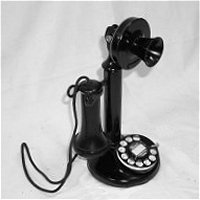 |
|
|
Model A1
In 1927, Western Electric produced its first model
to use a handset, making it easy for the subscriber
to use the telephone while keeping a hand free for
taking notes or performing other tasks.
The A1 was built upon the base of the 51AL candlestick.
The post was shortened and a cradle with modified switch
hook was added.
|
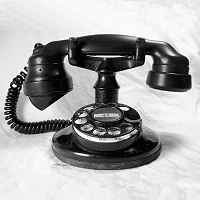 |
|
|
Model 102
This round-base phone was introduced later in 1927 and was
the first model designed specifically to use a handset.
More accurately, the designation "102" referred to the
electrical configuration of the majority of these sets
and the round-base form was called a B1.
|
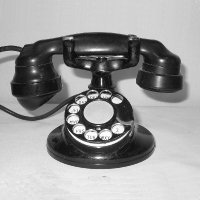 |
|
|
Model 202
Introduced in 1930, the "202" is identified by its
graceful oval base. The E1 handset remained virtually
unchanged with its distinctive "spit cup" to focus
the speaker's voice into the transmitter.
The designation "202" actually referred to the
electrical configuration of the majority of these
sets and the oval-base shape was called a D1.
|
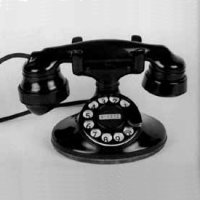 |
|
|
Model 302
In 1937, Western Electric and the Bell System introduced
the 302, created by the renowned industrial designer,
Henry Dreyfuss. The shell of the 302 was intended to be
cast out of metal. However, in 1941, the critical war-time
need for metal caused Western Electric to retool to make
the 302 out of molded thermoplastic.
The 302 was the first telephone containing all of its circuitry
within the base and not requiring a separately mounted
apparatus box for the ringer.
|
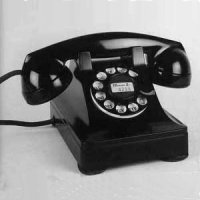 |
|
|
Model 5302
Following World War II, Henry Drefuss created a new and
more rounded form for the Bell System's basic dial telephone.
This was a design which would take advantage of plastic
technology.
Dreyfuss' design was for the Model 500 (see below), but in
response to huge post-war demand for phones, Western Electric
created a replacement housing for refurbishing its existing
inventory of Model 302 sets to make them look much like the
new Model 500.
This transitional set, dubbed the 5302, had the smaller
footprint of the Model 302 because it was really just a 302
with a new shell. Most 5302 sets retained the F1 style handset
from the underlying 302.
|
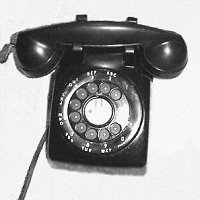 |
|
|
Model 500
First introduced in 1949, the Model 500 was to become the standard
Bell System telephone for well over a generation and the most
widely produced dial telephone ever.
Like the 5302, the dial markings were placed outside of the
fingerwheel holes for improved legibility. The slightly larger base
provided room inside the 500 for an adjustable bell ringer and
enhanced electronics. The more angular G1 handset design replaced
the curves of the 1930-looking F1.
Since the 1930s, Western Electric had manufactured telephone sets in
colors. However, only the most affluent were willing to pay the
substantial extra monthly charge for having a phone that wasn't
basic black. In the early 1950s, the Bell System began to promote the
new 500 sets in "designer colors" for an affordable one-time
non-recurring charge at the time of installation. The basic black 302
was quickly upstaged by 500 sets in lemon yellow, harvest gold,
chocolate brown, rose pink, cherry red, lime green, avocado, turquoise
and more than a dozen other colors.
|
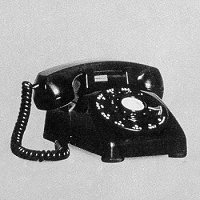 |
|
|
Models 701 and 702
The Princess Phone
Prior to the introduction of the Princess phone in 1959, most
households had only one telephone set, usually located in the
living room or other central location. The princess phone's small
size and lighted dial were designed to make attractive as a bedside
extension and the Bell System marketed it as such.
The original Model 701 of the Princess did not contain an internal
ringer. Western Electric produced a small baseboard mounted
ringer for use with the phone. A plug-in transformer provided
low voltage to power the dial lamp. The later Model 702 of the
Princess would have a self-contained ringer.
|
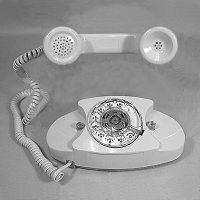 |
|
|
Model 220
Trimline
The last standard rotary-dial telephone to be manufactured by
Western Electric was the Trimline, introduced in 1965.
The Trimline's dial was located in the handset itself
with the ringer and electronics within the telephone's base.
The base was made in two variations: one for a desk set
designated as Model 220-AD, and the other for wall mounting,
designated as Model 220-AC.
|
 |
|
Other Models
There were a number of other common and not-so-common dial telephones
made by Western Electric during this period. They included several
wall-mounted phones like the 653, 354 and 554, and a number
of multi-line "key sets" for business use. There were also
many variants such as the Model 500-U which was a 500-set with
a light for the dial. There were compact desk mounted
Space Saver® 211 sets. There
were specialized sets such as those made with explosion-proof
housings for use in mines, grain elevators or other flammable
environments. There were weatherproof phones for exterior use.
In the 1960s and 70s, the Bell System offered mobile radio-telephone
service using dial sets manufactured by Motorola. Western
Electric produced dial-equipped Dataphone®
sets for transmitting data from computer to computer over circuit-switched
telephone lines.
And, of course, there were many types of payphones.
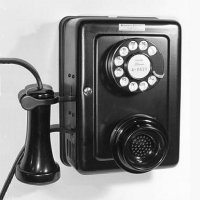 Model 653
Model 653
Wall Phone |
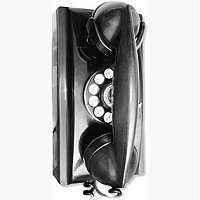 Model 352
Model 352
Wall Phone |
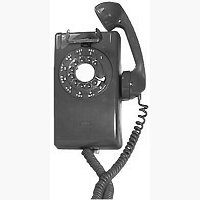 Model 554
Model 554
Wall Phone |
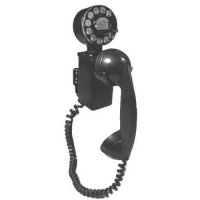 Model 211
Model 211
Space Saver® |
 Model 520
Model 520
Explosion-proof |
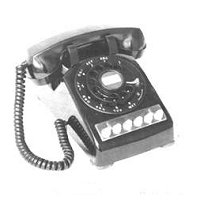 Model 564
Model 564
6-button Key Set |
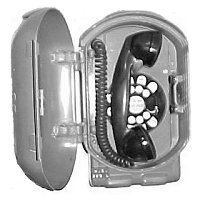 Model 325
Model 325
Weather-proof |
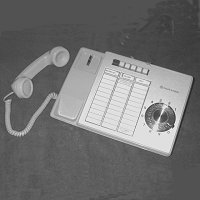 Model 872
Model 872
Touch-a-Matic® Memory Dialler |
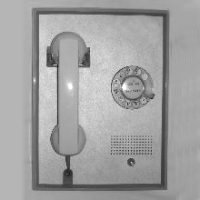 Model 750
Model 750
Panel Phone |
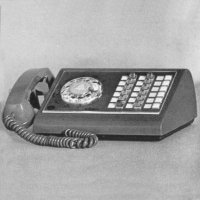 Model 637
Model 637
Call Director® |
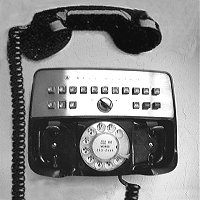 Bell System
Bell System
IMTS Mobile Telephone |
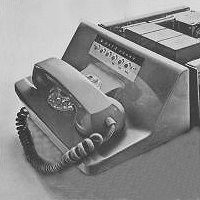 Bell 103
Bell 103
Dataphone® |
The End of an Era:
Touch ToneTM dialing arrives
The beginning of the end for the rotary dial came in 1963.
Tone dialing had been in use within the Bell System's switching
network for a number of years. Now, a new standard desk set, the
Model 1500, was introduced and tone dialing was made
available to the general public. The 1500 had the same footprint
and familiar G1 handset as the venerable 500 set, but where there
had been a dial, the redesigned shell now accommodated a 10-button
Touch-ToneTM key pad. (The 1500 had
no # and * buttons. These special feature keys were introduced in
1968 with the Model 2500.)
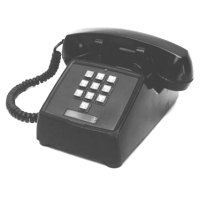 Model 1500
Model 1500
10-button |
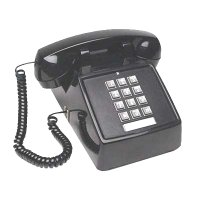 Model 2500
Model 2500
12-button |
One Last Encore:
The Design LineTM Models
In 1974, the Bell System introduced a wide range of Design LineTM
telephones which were marketed through retail Phone Center Stores. Although
most of these phones were made for modern Touch-ToneTM
service, a number of them were also produced in rotary dial versions for
subscribers whose lines were not equipped for Touch-ToneTM
service.
For the first time in its history, the Bell System contracted with
third-party manufacturers in addition to Western Electric to supply
some of these phones.
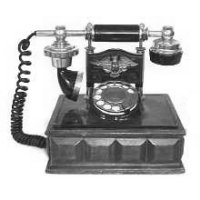 Mediterranean® Mediterranean® |
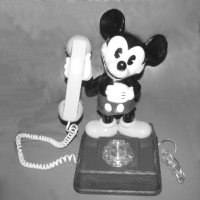 Mickey Mouse© Mickey Mouse© |
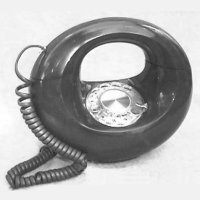 Sculptura® Sculptura® |
Epilogue
Today, it's unusual to see a rotary dial still in use. There
is a generation growing up which has never made a phone call by
turning the finger-wheel of a rotary dial telephone.
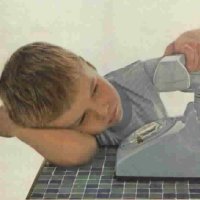
from a 1962
Western Electric advertisement
Images come from a number of public and private
sources and have been modified and reformatted for the purpose
of this page.
Images may be subject to copyright.
Copyright © 2004 by William Lee Roberts. All rights reserved.



















